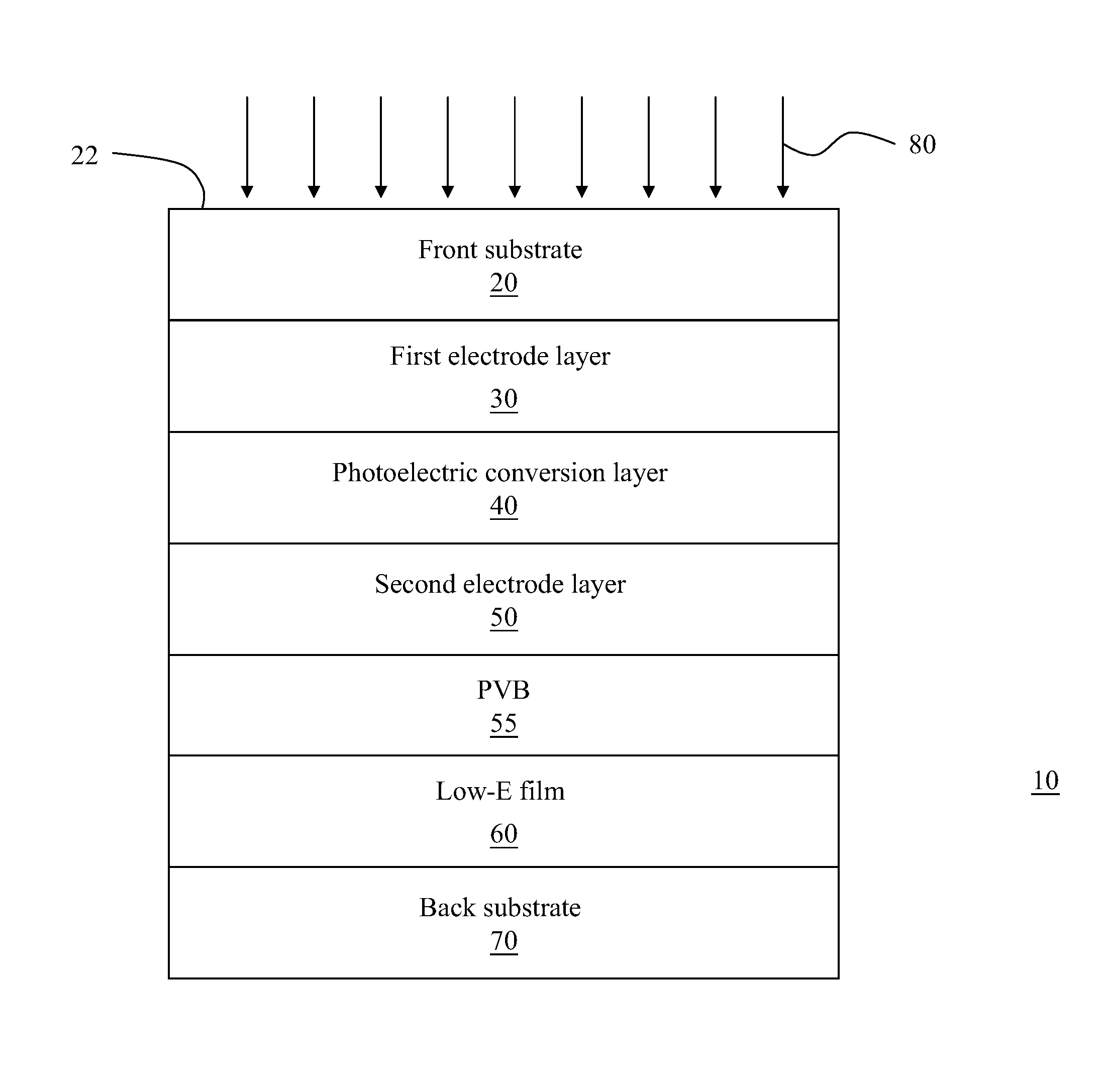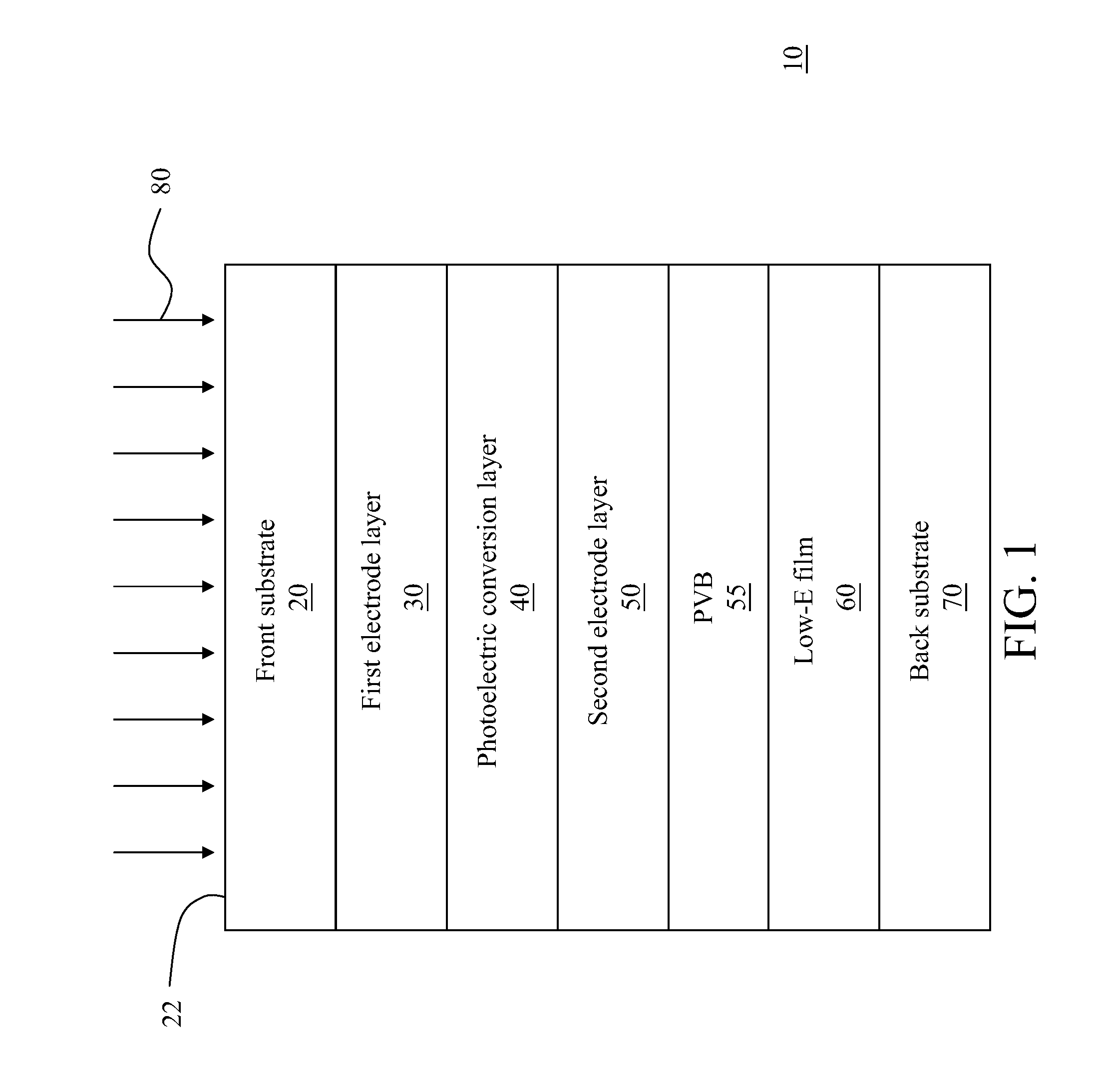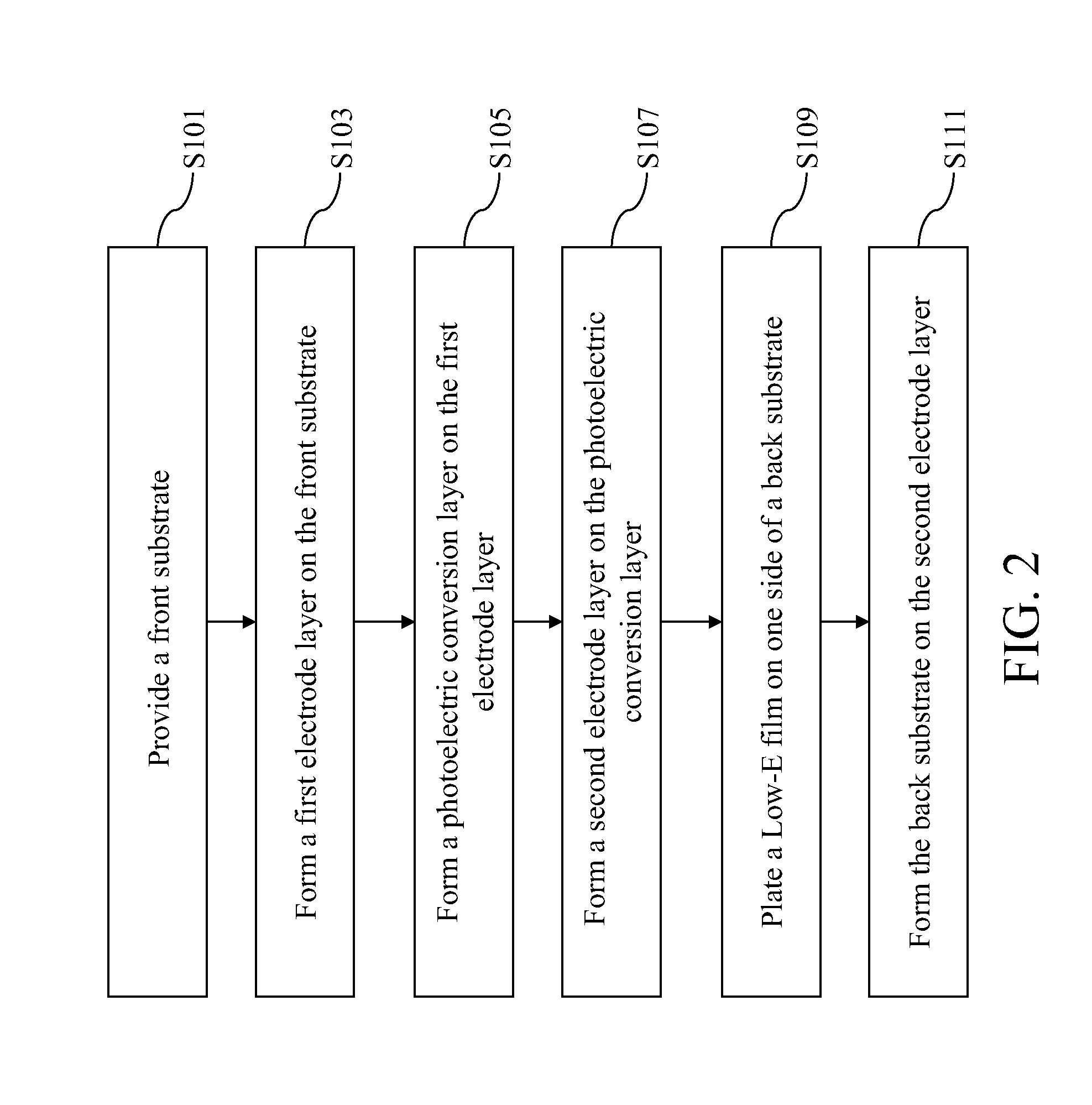Solar glass and manufacturing method thereof
a technology of solar energy and glass, applied in the field of solar energy, can solve the problems of increased air conditioner load, increased energy consumption, and thicker vacuum layer of bipv glass curtain, and achieve the effect of improving the convenience of glass delivery or construction of a structure, and greatly reducing the thickness of glass
- Summary
- Abstract
- Description
- Claims
- Application Information
AI Technical Summary
Benefits of technology
Problems solved by technology
Method used
Image
Examples
Embodiment Construction
[0019]In the following description, for purpose of explanation, numerous specific details are set forth in order to provide a thorough understanding of the detailed embodiments. It will be apparent, however, that one or more embodiments may be practiced without these specific details. In other instances, well-known structures and elements are schematically shown in order to simplify the drawings.
[0020]FIG. 1 is a sectional structural view of a solar glass according to an embodiment.
[0021]As shown in FIG. 1, the solar glass 10 comprises a front substrate 20, a first electrode layer 30, a photoelectric conversion layer 40, a second electrode layer 50, a Low-E film 60, and a back substrate 70.
[0022]The front substrate 20 may be a transparent substrate, and the material of the transparent substrate may be, but not limited to, glass or transparent resin. One side of the front substrate 20 is a light-incident side 22, and sunlight 80 is incident on the solar glass 10 from the light-incide...
PUM
 Login to View More
Login to View More Abstract
Description
Claims
Application Information
 Login to View More
Login to View More - R&D
- Intellectual Property
- Life Sciences
- Materials
- Tech Scout
- Unparalleled Data Quality
- Higher Quality Content
- 60% Fewer Hallucinations
Browse by: Latest US Patents, China's latest patents, Technical Efficacy Thesaurus, Application Domain, Technology Topic, Popular Technical Reports.
© 2025 PatSnap. All rights reserved.Legal|Privacy policy|Modern Slavery Act Transparency Statement|Sitemap|About US| Contact US: help@patsnap.com



